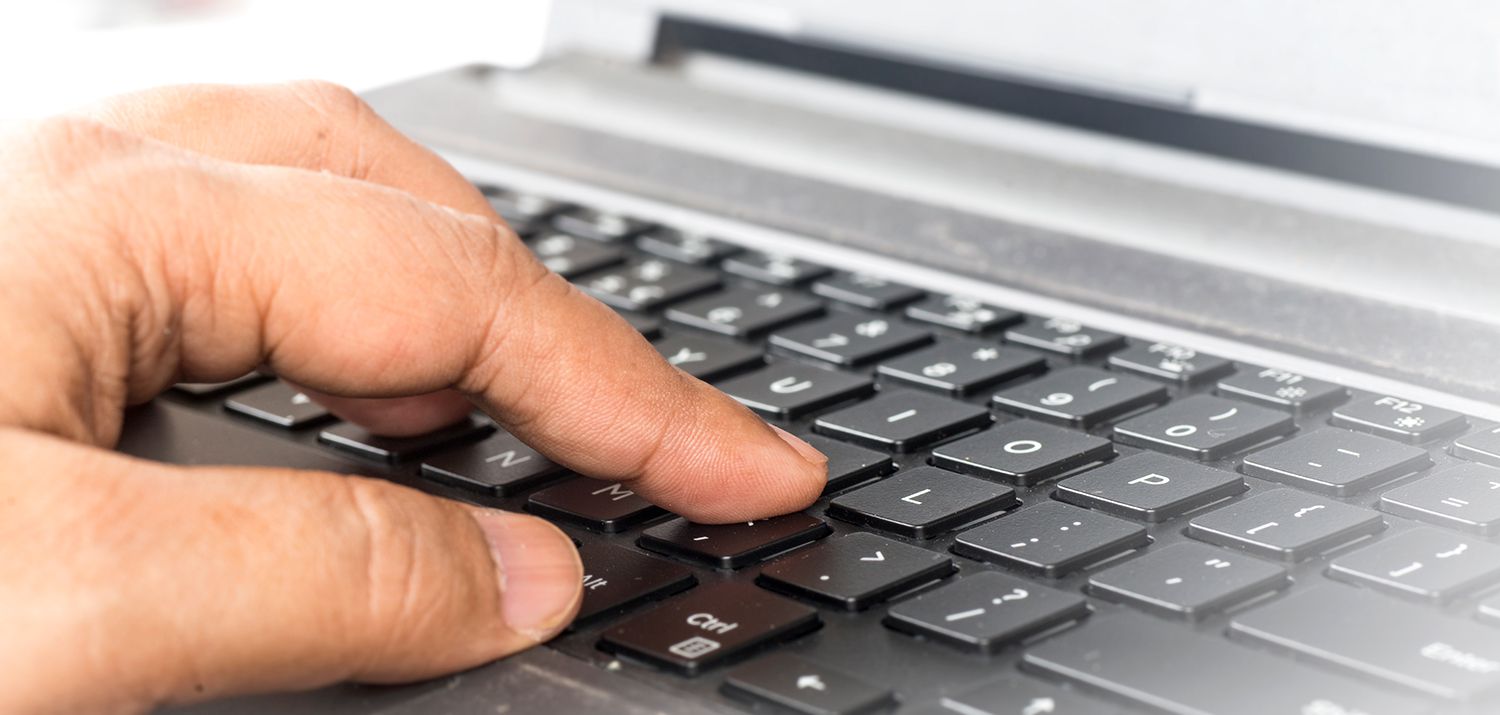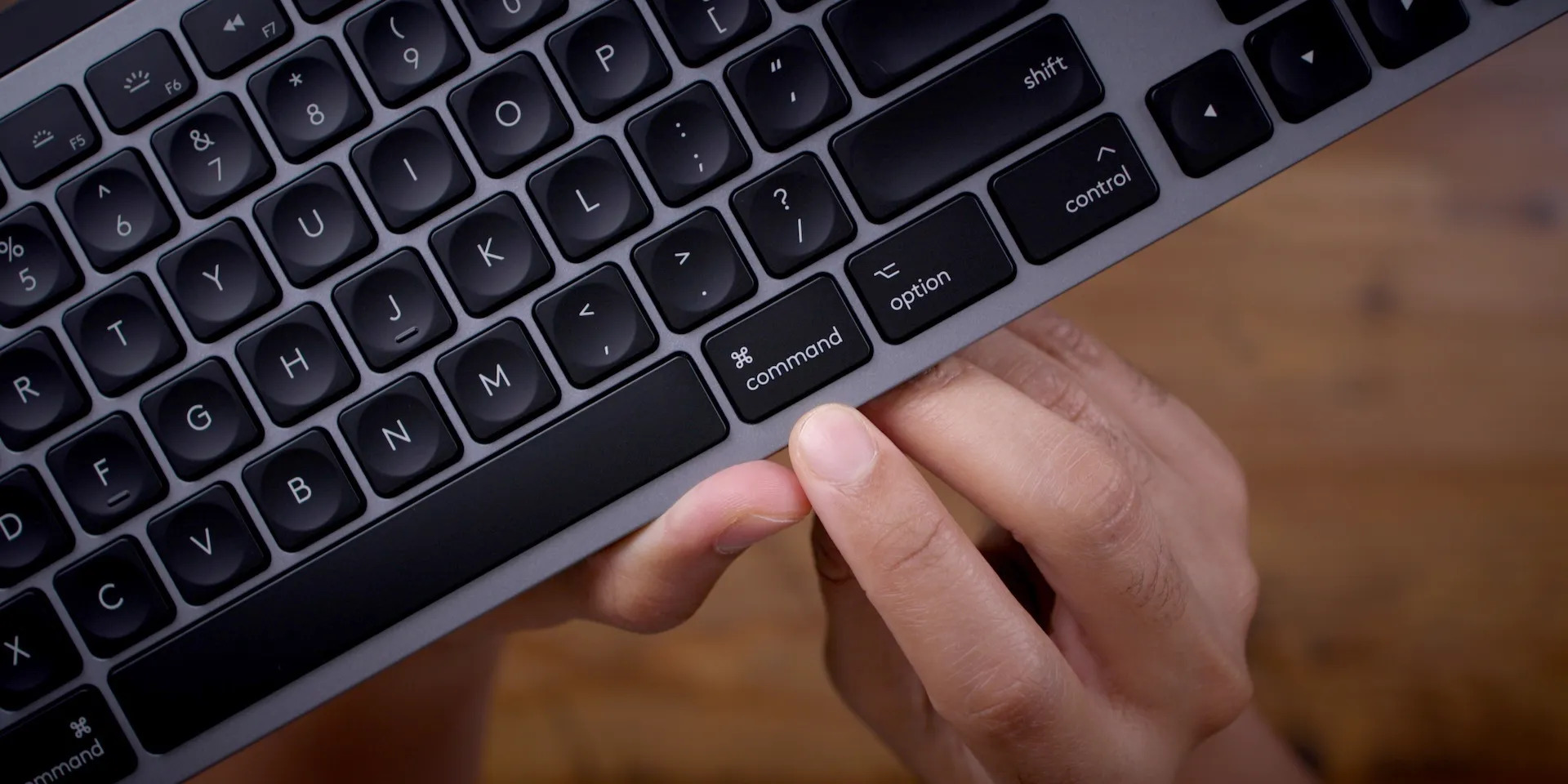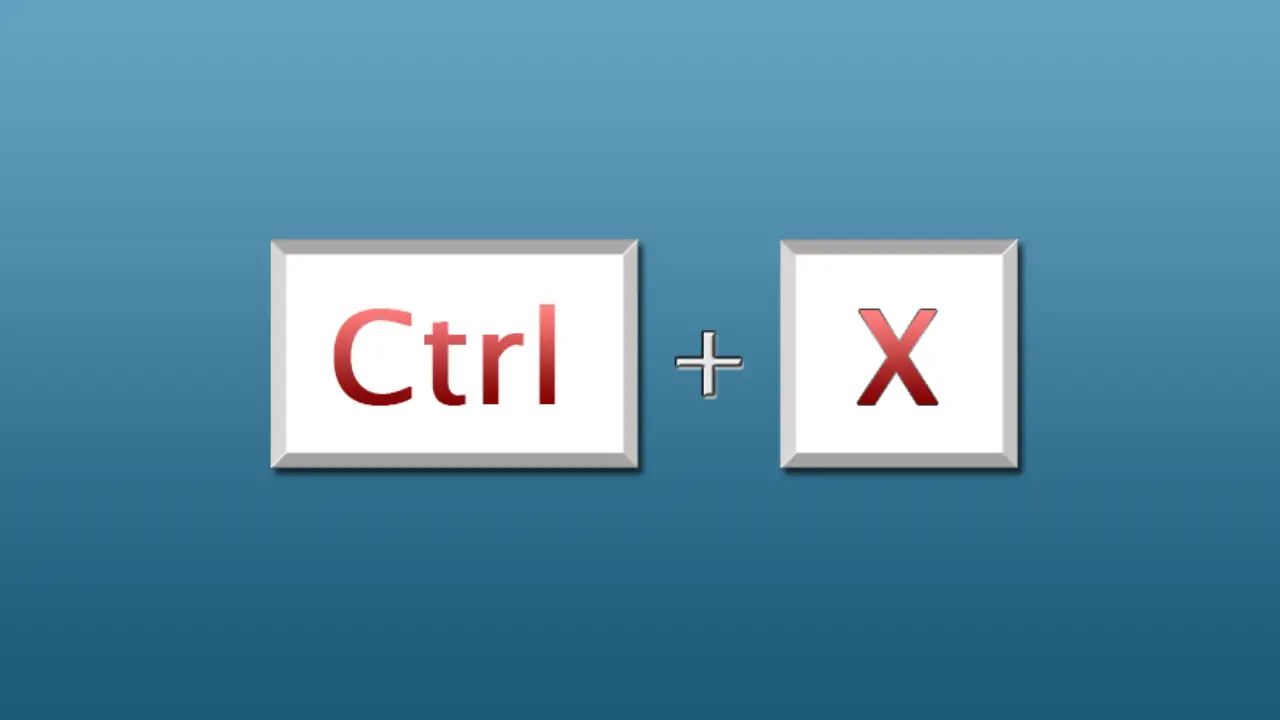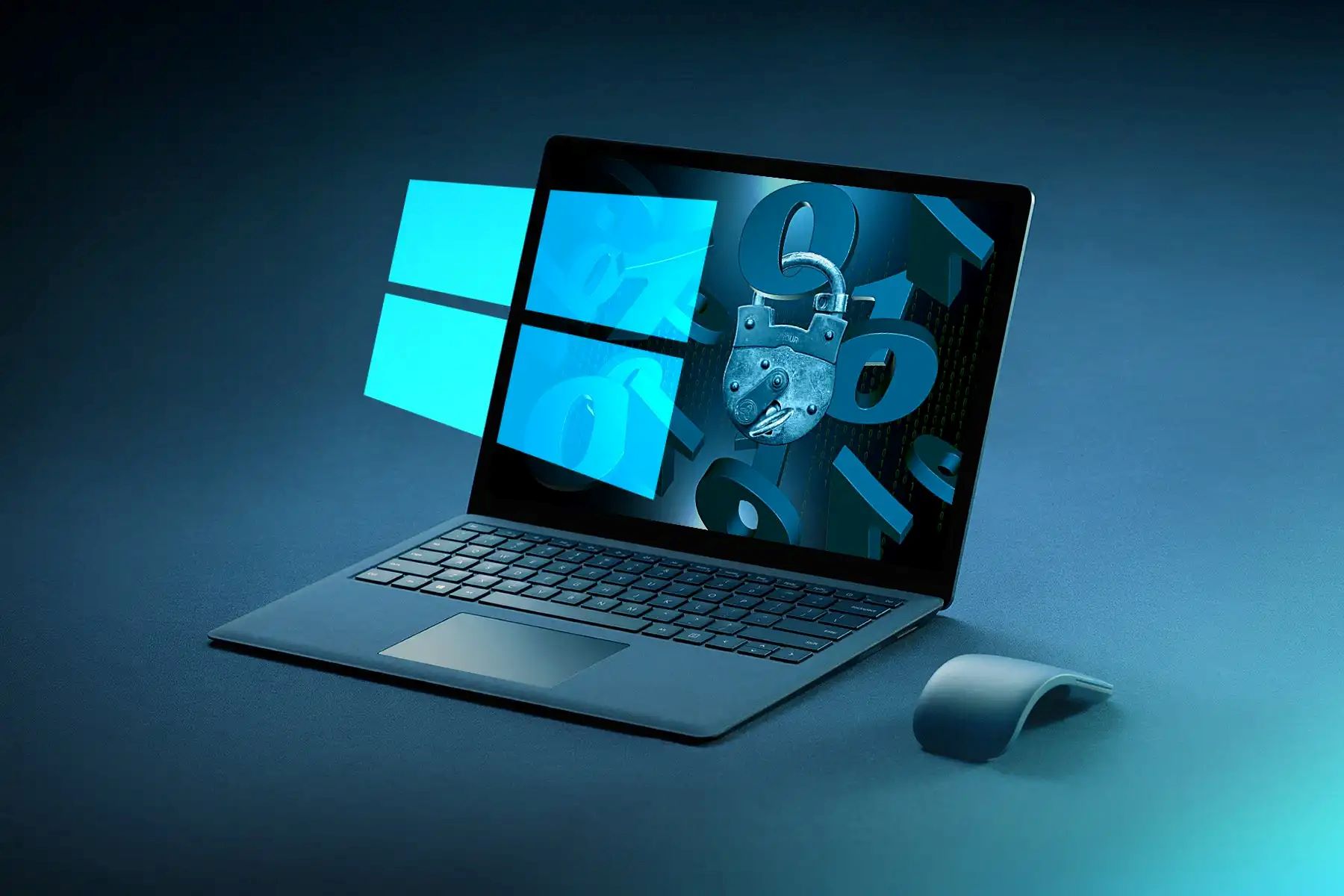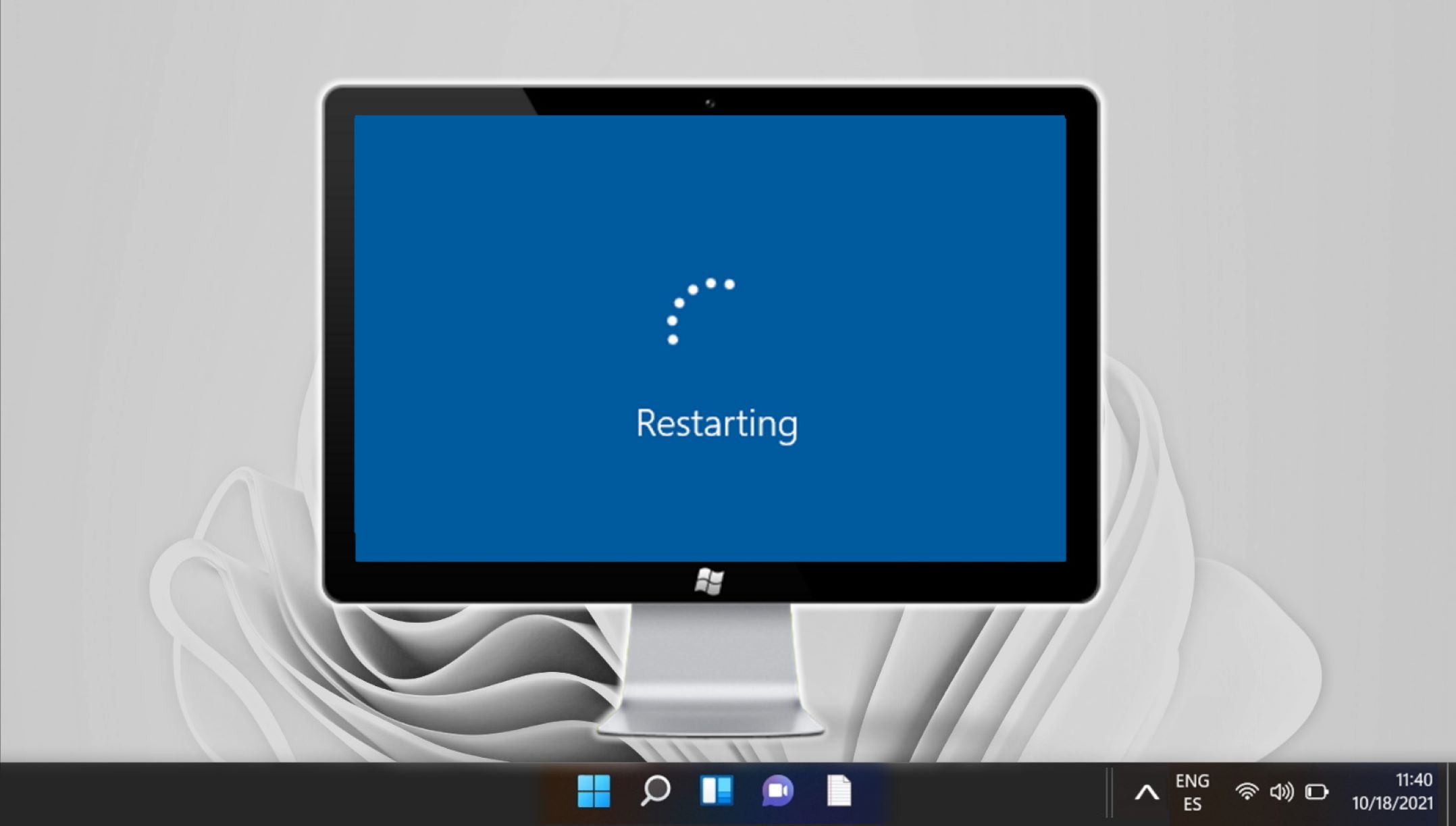Introduction
When it comes to using a Windows keyboard, you may have noticed a key that is labeled with a symbol that looks like a four-leaf clover or a flag. This key, known as the “Windows key,” plays a significant role in navigating and controlling various functions on a Windows computer. However, if you are coming from a Mac background, you might be wondering where the equivalent “Command key” is on the Windows keyboard.
In this article, we will explore what the command key is, the differences between the command key on Mac and Windows, and how the Windows key serves as a substitute. We will also dive into popular uses of the Windows key and how you can customize its functionality on your Windows keyboard.
Whether you are a beginner or an experienced Windows user, understanding the purpose and capabilities of the Windows key is essential for maximizing your productivity and efficiency. So, let’s unravel the mystery behind the command key on a Windows keyboard and discover the possibilities it holds.
What Is the Command Key?
The command key, also known as the “Apple key” or “cmd key,” is a modifier key found on Apple keyboards. It is denoted by a symbol that resembles a cloverleaf or a looped square. The command key is integrated into the macOS operating system and is used in conjunction with other keys to execute a variety of system commands and keyboard shortcuts.
With the command key, Mac users can quickly perform tasks such as opening applications, saving files, taking screenshots, and navigating through menus and windows. It is a fundamental component of the Mac user experience and is essential for efficient and seamless interaction with the operating system.
Unlike Windows keyboards, which come equipped with a dedicated Windows key, Mac keyboards exclusively feature the command key. This means that if you switch from a Mac to a Windows computer, you might find yourself wondering how to replicate the functionality of the command key on your new Windows keyboard.
While the command key is specific to Apple devices, Windows computers utilize the Windows key as a substitute. The Windows key, denoted by a Microsoft Windows logo, serves similar purposes to the command key and allows users to access various functions and shortcuts on their Windows operating system.
Next, let’s delve into the differences between the command key on Mac and the Windows key on Windows keyboards.
Differences Between the Command Key on Mac and Windows
While the command key on Mac and the Windows key on Windows keyboards have similar functionalities, there are some key differences between the two. Let’s explore these differences to better understand how they impact the user experience.
Placement: One noticeable difference is the physical placement of the keys on the keyboard. On a Mac keyboard, you will find the command key located next to the space bar, on either side, while on a Windows keyboard, the Windows key is typically positioned between the left Ctrl and Alt keys.
Key Symbols: Another difference lies in the symbols used to represent these keys. The command key is typically adorned with a cloverleaf or looped square symbol, while the Windows key displays the iconic Microsoft Windows logo.
Operating System Integration: The command key is deeply integrated into macOS, serving as the primary modifier key for executing system commands and keyboard shortcuts. On the other hand, while the Windows key is also essential for executing various functions on a Windows computer, it is not as extensively integrated into the overall operating system experience compared to the command key in macOS.
Functionality: In terms of functionality, both keys enable users to access system commands and shortcuts. However, due to their different operating systems, the specific commands and shortcuts associated with these keys may vary. Mac users are accustomed to using the command key in combination with other keys to execute various tasks, while Windows users rely on the Windows key to access the Start Menu, open programs, and perform system-level functions.
Contextual Differences: It is essential to note that the behavior and function of the command key and Windows key can also differ depending on the context within the operating system. Certain software applications and programs may have customized shortcuts or utilize the modifier keys in unique ways, further distinguishing the experiences between Mac and Windows users.
By understanding these key differences, you can effectively navigate and leverage the functionality provided by these keys on your respective operating systems. In the next section, we will explore the capabilities and popular uses of the Windows key on a Windows keyboard.
The Windows Key: A Substitute for the Command Key
For Windows users, the Windows key serves as a substitute for the command key found on Mac keyboards. Just like the command key, the Windows key is a modifier key that allows users to access various functions and execute shortcuts on their Windows operating system.
The Windows key, which features the distinctive Microsoft Windows logo, is predominantly located between the left Ctrl and Alt keys on a Windows keyboard. It is strategically positioned for easy and convenient access, enabling users to quickly perform tasks and navigate their Windows environment.
Similar to the command key, the Windows key is used in combination with other keys to execute specific commands and shortcuts. Some common functions and operations associated with the Windows key include:
- Opening the Start Menu: Pressing the Windows key on your keyboard instantly opens the Start Menu, providing quick access to programs, settings, and various system functions.
- Launching Apps and Programs: By pressing the Windows key + a specific letter or number associated with an app or program pinned to your taskbar or Start Menu, you can instantly launch that application.
- Switching Between Open Apps: Pressing the Alt + Tab keys together, or pressing the Windows key + Tab, allows you to cycle through your open applications and switch to the desired one.
- Opening the Action Center: Pressing the Windows key + A opens the Action Center, where you can access important system notifications, settings, and quick actions.
- Using Windows Shortcuts: There are numerous keyboard shortcuts available that make use of the Windows key. For example, pressing Windows key + E opens File Explorer, Windows key + D shows the desktop, and Windows key + L locks your computer.
By utilizing the Windows key and its associated shortcuts, Windows users can streamline their workflow, navigate their system efficiently, and perform tasks with speed and ease.
In the next section, we will explore some popular use cases and creative ways to harness the power of the Windows key on a Windows keyboard.
Popular Uses of the Windows Key
The Windows key on a Windows keyboard offers a myriad of functionalities and shortcuts that can enhance your overall computing experience. Here are some popular uses and creative ways to leverage the power of the Windows key:
- Accessing the Start Menu: The Windows key serves as a quick shortcut to open the Start Menu, allowing you to launch applications, search for files, and access various system settings. Simply press the Windows key on your keyboard to instantly bring up the Start Menu.
- Navigating the Taskbar: By combining the Windows key with number keys (e.g., Windows key + 1, Windows key + 2), you can quickly switch between applications that are pinned to your taskbar. This enables seamless multitasking and faster access to your frequently used programs.
- Managing Virtual Desktops: Windows key + Tab allows you to view and manage your virtual desktops, which are separate workspaces that let you organize your open applications and tasks. This feature is especially useful for multitasking or separating work and personal activities.
- Snapping Windows: Pressing the Windows key + left or right arrow key allows you to snap the current window to the left or right half of the screen, respectively. This makes it easy to compare documents side by side or work with multiple apps simultaneously.
- Taking Screenshots: The Windows key + Shift + S combination opens the snipping tool, a powerful screenshot tool that allows you to capture specific regions or the full screen. This feature is handy for sharing information or capturing important moments on your computer.
These are just a few examples of the popular uses of the Windows key on a Windows keyboard. It’s important to note that the specific shortcuts and functionalities may vary depending on your Windows version and settings. Experimenting with different combinations and exploring the Windows key’s capabilities will unveil a whole new level of productivity and convenience.
In the next section, we will discuss how you can customize the Windows key to suit your personal preferences and workflow.
How to Use the Windows Key on a Windows Keyboard
To make the most out of the Windows key on your Windows keyboard, it’s important to familiarize yourself with its various functionalities and learn how to use it effectively. Here are some tips and guidelines to help you get started:
- Accessing the Start Menu: Simply pressing the Windows key on your keyboard will open the Start Menu. From there, you can navigate through the available applications, search for files, and access system settings. You can also interact with the Start Menu using the arrow keys and Enter key for more precise control.
- Launching Applications: Pin your favorite applications to the taskbar for easy access. To launch an application using the Windows key, press and hold the Windows key, and then press the corresponding number key that is assigned to the application on the taskbar. For example, if an application is pinned as the third icon on your taskbar, you would press Windows key + 3 to launch it.
- Navigating Virtual Desktops: If you utilize multiple virtual desktops, press the Windows key + Tab to enter the Task View interface. From there, you can switch between different virtual desktops or add new ones. You can also use the Ctrl + Windows key + left or right arrow key to switch between virtual desktops quickly.
- Snapping Windows: To snap a window to the left or right half of the screen, press the Windows key + left or right arrow key, respectively. This is especially useful when comparing documents, taking notes, or multitasking with two applications side by side. Pressing the Windows key + up arrow key maximizes the current window, while Windows key + down arrow key minimizes it or restores it to its previous size.
- Using Windows Shortcuts: The Windows key is often used in combination with other keys to execute various shortcuts. Some commonly used shortcuts include Windows key + E to open File Explorer, Windows key + D to show or hide the desktop, and Windows key + L to lock your computer. Experiment with different combinations and explore the available shortcuts to discover ways to streamline your workflow.
By becoming proficient in using the Windows key and its associated shortcuts, you can navigate your Windows environment more efficiently, boost your productivity, and save valuable time.
Next, we will discuss how you can customize the functionality of the Windows key to further personalize your Windows keyboard experience.
Customizing the Windows Key
Windows provides users with the flexibility to customize key settings, including the functionality of the Windows key on their keyboards. This customization allows you to tailor the Windows key to better suit your personal preferences and workflow. Here are some customization options you can explore:
- Using Third-Party Software: Various third-party software applications are available that allow you to remap the Windows key and assign different functions or shortcuts to it. These tools provide advanced customization options, enabling you to redefine the behavior of the Windows key according to your specific needs. Examples of such software include AutoHotkey, SharpKeys, and PowerToys.
- Modifying Windows Registry: For tech-savvy users, modifying the Windows Registry is another way to customize the Windows key. By accessing the Registry Editor, you can edit the registry values related to the Windows key to redefine its behavior or disable it entirely. However, it is important to proceed with caution and create a backup of the Registry before making any changes.
- Using Keyboard Manufacturer Software: Some keyboard manufacturers provide their own software that allows you to customize the functionality of the Windows key. These software applications offer user-friendly interfaces and intuitive options for remapping keys, creating macros, and assigning specific functions to the Windows key. Check the website of your keyboard manufacturer for any available software downloads.
- Disabling the Windows Key Temporarily: If you find that the Windows key is accidentally triggered during gaming or other activities and disrupting your workflow, you can temporarily disable it. Pressing the Windows key + R opens the Run dialog box, where you can type “regedit” and navigate to the DWORD value “DisableWinKey” under the “HKEY_CURRENT_USER\Software\Microsoft\Windows\CurrentVersion\Policies\Explorer” registry path. Changing this value to “1” will disable the Windows key until the next system restart.
Remember that customizing the Windows key carries some risks, especially when modifying the Windows Registry. It is always recommended to proceed with caution, create backups, and refer to reliable sources or manufacturer documentation for guidance.
By customizing the Windows key, you can enhance your overall keyboard experience and tailor it to your specific needs and preferences.
Now that we have explored the various functionalities and customization options for the Windows key, let’s summarize what we have learned so far.
Conclusion
In conclusion, the Windows key on a Windows keyboard serves as a substitute for the command key found on Mac keyboards. While there are some differences between the two, both keys provide similar functionalities, allowing users to access various system commands and execute shortcuts.
By understanding how to use the Windows key effectively, you can navigate your Windows environment with speed and efficiency. Whether it’s opening the Start Menu, launching applications, managing virtual desktops, snapping windows, or utilizing Windows shortcuts, the Windows key offers a range of capabilities that can enhance your productivity and streamline your workflow.
Furthermore, the ability to customize the Windows key provides even more flexibility and personalization options. Whether through third-party software, modifications to the Windows Registry, or keyboard manufacturer software, you can remap the Windows key, assign different functions, and disable it temporarily to better align with your specific needs and preferences.
Whether you are a seasoned Windows user or new to the Windows ecosystem, understanding and leveraging the features of the Windows key on your keyboard is crucial for maximizing your computing experience. By familiarizing yourself with its various functionalities, customizing its behavior, and exploring its potential, you can unlock a whole new level of productivity and convenience.
So, embrace the power of the Windows key and let it be your gateway to seamless navigation, efficient multitasking, and improved workflow on your Windows keyboard.







